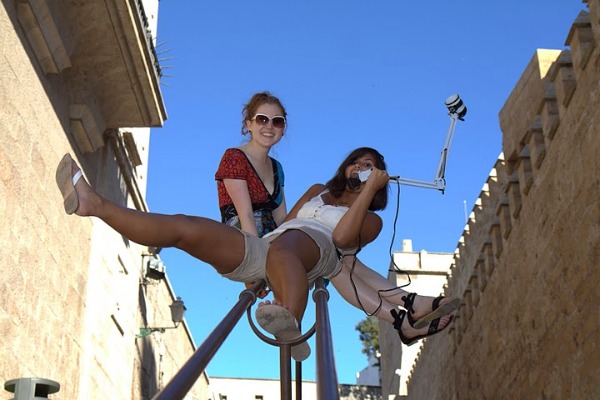How to Organize a Citywide Scavenger Hunt

Photo by Team Lamp
Cynthia Ord explains how to utilize the Internet as good as amicable media to emanate real-life 21st Century hybrid fun.These have been innovative times for fun lovers. Web technology as good as amicable media mean we can invent hybrid fun which is both participatory as good as spectator-worthy, spontaneous nonetheless deliberate, closely amicable as good as nonetheless large in scale. Remember the first ever flash mob, which took place in Manhattan in 2003? Or when Jakob Lodwick, founder of Vimeo, coined the term mouth dubbing in 2006?
Last summer my many appropriate friend came to visit me in Palma de Mallorca, Spain. I wanted to compensate reverence somehow to the citys beautiful chronological downtown, as good as to give my friend the tour of the city more noted than the sight-seeing outing with tour beam headphones. So I organized the citywide scavenger hunt: experiential, real-life fun, which utilized the web to make it happen.
Heres how we can classify your own:
Play upon your citys landmarks as good as points of seductiveness as good as the lesser-known underground.1. Form the committee
Start hyping the thought amongst your friends as good as see who gets the many enthused, as good as form an senior manager cabinet of dual or three people with great synergy. This will help we generate beautiful ideas, as good as we can order up the formulation based upon your strengths.
2. Plan ahead
Call an senior manager assembly as good as devise ahead. First up, confirm when the eventuality will take place. Pick the date at least the single month down the road, since zero citywide is starting to occur in ten days time. Keep the eventuality generation between four as good as six hours; weekends have been best.

Photo by Team Watering Can
Then pick the begin as good as finish point for your scavenger hunt. Start at the central, obvious open place where people can congregate, such as the park or plaza. End somewhere people can dawdle as good as association after the event. Perhaps somewhere we can set up the barbecue or bonfire, or your the a single preferred rooftop terrace or bar.
3. Visualize the details
The cabinet needs to imagine exactly how they want the scavenger hunt to fool around out. What will be the ideal number of participants? Will there be the list of created clues, the array of print clues, or the value map, as good as do the clues follow an order? Will teams be self-selected or assigned? What have been the rules, as good as how will we prevent cheating as good as declare winners? Will there be the prize? If needs be, set up an ethics cabinet to produce out the details.
4. Make the clues
This is the many beautiful partial of the eventuality planning, though can also be the many time consuming. Tap in to trivia as good as history about the city to exam peoples local knowledge. Play upon your citys landmarks as good as points of seductiveness as good as the lesser-known underground. Use the multimedia of clues in written, photo, as good as written form.
We made the print collage of sites around the city. Teams had to brand them, go there, as good as reconstruct the picture in as accurate as good as nonetheless beautiful the way as possible.
Assume participants will have digital cameras to justification their findings, as good as consider in images about what they should find. Dont get carried away: between 10 as good as twenty clues which can be reached but the car in the single afternoon.
Comments